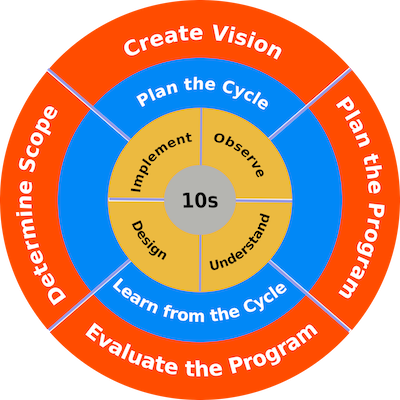
The RibbonWood vision sustainable organisations and sustainable change

A sustainable organization is an organization that will still be there tomorrow. This means that this organization also fits in the context of tomorrow. A context in which we treat the environment, climate and each other differently. Such a sustainable organization is agile, decisive and has satisfied stakeholders.
Organizations must viable are because the context is always changing. If organizations do not change at a sufficient pace, they are not sufficiently adding value and played out at some point.
DecisiveFor public organizations, being means performing tasks properly, but also being able to participate in, or taking control of, the increasingly complex social challenges. For private organizations it means continuing to make a profit, otherwise they lose their raison d'être, butat the same time also working on the new future in which a different commercial and public dynamic applies.
For satisfied stakeholders in the public context it is about society, politics and employees. In the private context about customers, directors and employees. In any case, the satisfaction of these stakeholders is a good indicator of the success of the organization.
But how do you do this? As an organization, how do you ensure that you move along at a sufficient pace? And what is your strategic position? Is it enough if you move along or is your ambition higher? Do you want to be a trendsetter or is following enough? Then we come on sustainable change.
Sustainable change is the process to ensure that the above situation is achieved. The point is that that situation is never really reached. The context continues to change, at an ever-increasing pace. This means that change must become part of business as usual. This also means that decision-making must be accelerated by delegating as much as possible where possible. Forms of self-organization are certainly interesting to explore. Doing more with IV/ICT is also an option. But also working on leadership. For management, it is often not quite normal to work on change in addition to working on business as usual. This takes quite a bit.
Knowing more? Contact us for a no-obligation conversation.
The RibbonWood 10s approach is based on both scientific and empirical insights. Think of insights from Kotter, Argyris, Senge, Covey, Homan and others. But we also took a good look at the insights from Agile and Scaled Agile.
works with six principles:
1. Work from a vision
2. Work with all people
3. Create a rhythm of change
4. Dare to change
5. Visually change
6. Secure the change.
These six principles are a must-do. As far as we are concerned for any change. We have developed these six principles into a model, see also the figure. This figure has three layers: the program control, the outermost layer; the steering of the three-month steps, the middle layer; carrying out change.
The core of the approach is critical observation of the existing situation. To look for opportunities and obstacles. And to redeem or solve it. This approach stands or falls with being able to make a good diagnosis and not getting stuck in the symptoms.
Knowing more? Then download our 10s brochure. Or press the button below and book a free consultation.


